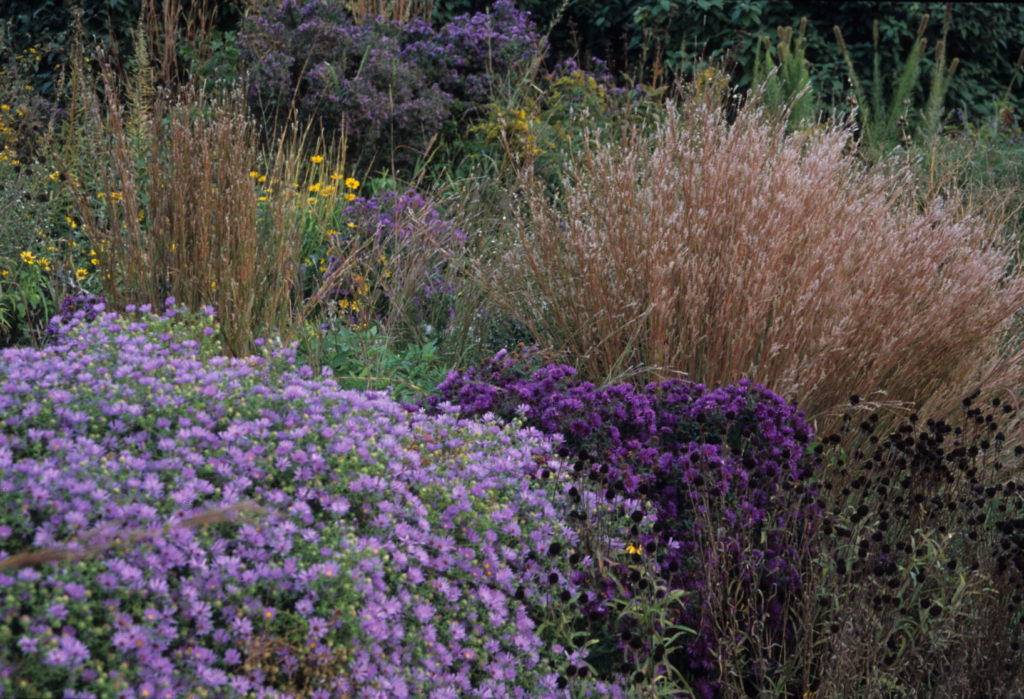Over the 26 years that I have been at the Arboretum, I have made my share of mistakes. Some examples include planting prairie dock in a formal garden design, starting a garden too fast, and/or not knowing my site. I had book knowledge about horticulture, but I had not learned much about native plants. Through trial and error – mostly error – I learned some hard lessons and even killed a few plants along the way. I am still learning, but here are seven lessons I believe are essential for a successful prairie garden.
1. Perennial and annual weed control
I have made this mistake too often. In a rush to plant, I don’t get problem weeds like bindweed and Bermudagrass under control before planting. I am still fighting this issue to this day in some of these landscape settings. However, when I take the time to properly eradicate these weeds, the overall long-term success of the garden increases and the work to maintain it decreases. A little work at the beginning will save you many headaches down the road.
2. Plants should match your site.
This is the most important principle to follow in developing a successful landscape. Take a critical look at the area you want to landscape with native plants. Is it sunny? It is shaded for part of the day? What type of soil do you have? Is there a microclimate? Is it exposed to wind? All these factors will guide you as you select plants for your site. This step requires some research and time as you familiarize yourself with the qualities and environmental needs of native plants.
3. Succession of Bloom
There are no Wave Petunias in the prairie. If you visit a prairie landscape like the Konza Prairie every two to three weeks throughout the year, you will observe plants beginning to bloom, in full bloom or going out of bloom. That is how you need to design your native landscape. Include plants that bloom in every season of the year and then strategically add grasses for movement and texture in the winter months. Take time to acquaint yourself with the life cycles of wildflowers and grasses.
4. Plan your garden for all seasons of the year
This lesson took the longest to learn, because it meant becoming familiar with the complete life cycle of each native plant. I needed to learn all about them – their bloom times, soil conditions they need to thrive, mature height and what they look like when not blooming, including seedheads and forms. Most of these characteristics had to be experienced over several years. That information is vital to planning and developing a prairie garden.
5. Be Patient
A prairie garden does not magically appear overnight. I know this goes counter to our “instant everything” culture, but prairie plants don’t work that way. It takes time for those transplants or seedlings to develop root systems that will sustain them during the dry periods of the year. I remember visiting a prairie reconstruction in Wisconsin several years ago. It had been established from seed 20 years earlier and the prairie manager said it was just then really maturing into a true prairie. I have found that if you are patient, you will be rewarded by beautiful, strong and adapted native plants.

6. Start Small
Planting too much too soon – I have made this mistake many times. My eyes get bigger than I can manage. I like too many of these native plants and rather than working at a project in stages, I plant the whole area. I then spend the rest of the summer maintaining a planting that is too big for the time I can give it. It has a tendency to get out of hand in a hurry if I don’t keep up with it on at least a weekly basis. Plant an area that you can handle with your schedule.
7. Remember Why!
Most times we create something for our own enjoyment. A properly designed native garden can be very attractive to you aesthetically. What we often forget, but are quickly reminded of, is that native plants attract many different pollinators and other wildlife to our landscapes. If you plant them they will come.
Pollinators and wildflowers have a symbiotic relationship. Pollinators seek out the wildflowers they need and utilize them throughout the year. Monarch populations are declining. They need milkweed, and since we have milkweed in the Arboretum, they show up. Also, just like the monarchs, songbird populations are declining. They need prairie habitat for survival along with wildflower seeds to feed overwintering birds.
Obviously I have not figured everything out. Learn from my mistakes and maybe a few of your own. Gardening is not an exact science. What works for you may not work for me. Your site may be totally different from mine. The key is to keep learning. Try plants you believe will work in your landscape.
Besides learning lessons the hard way remember to connect with your WHY! The “WHY we do something” gets lost in the tasks of creating something new. I need to be reminded “WHY” from time to time to reset my focus. We each have our own unique perspective and motivation, but reconnecting with your “WHY” will move you ever closer to your native plant gardening goals.






